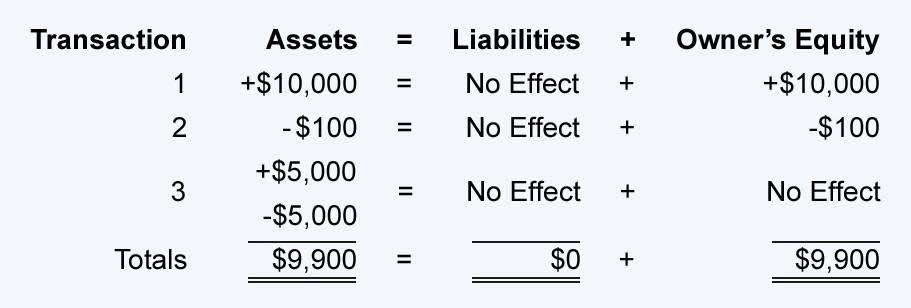Purchase Ledger vs Sales Ledger What’s the Difference?

We compare sales and purchase ledgers and highlight their unique functions in tracking sales and transactions. We explain how to conduct accounting reconciliation, which is the act of comparing and matching records to verify accuracy. Finally, the course explains how to vouch a ledger, which is the process accountants use to examine supporting documentation to ensure transaction accuracy. Reconciling supplier statements ensures accuracy and accountability in financial records. This process involves cross-verifying transactions recorded in a company’s accounts with supplier statements to identify discrepancies, such as billing errors or overlooked accounting credits.
- This process involves cross-verifying transactions recorded in a company’s accounts with supplier statements to identify discrepancies, such as billing errors or overlooked credits.
- Wordstemplates.org is not in a partnership with any firm or business or company which is hired to promote Microsoft@.
- Instantly understand and easily Clear Sign all transactions on the world’s first secure touchscreen, anywhere, any time.
- When using subsidiary accounts, there is no need to record each transaction in general ledger.
Understanding the Ledger: The Cornerstone of Accounting
It shows us the details of debit and credit and the current balance of that company or a business after every transaction. At the end of the accounting period, the balance of the purchase ledger should be transferred to the general ledger and recorded as your accounts payable balance. The purchase ledger is not part of the purchasing department, but instead, is used as an accounts payable tool for managing invoices and payments. An accounting ledger, often referred to as the “General Ledger,” is a record where all account summaries are kept in an organized manner. This includes details from all business transactions such as sales, purchases, and overheads. Its purpose is to provide a comprehensive view of a business’s financial state at any given time.
- The purchase ledger is not part of the purchasing department, but instead, is used as an accounts payable tool for managing invoices and payments.
- These tools also provide real-time insights into your financial position, enabling better decision-making.
- We begin by examining the pivotal concept of a purchase ledger, setting the stage for a deep dive into the intricacies of financial management.
- The Purchase Ledger is structured as a T-account for each supplier, with credits representing purchases (amounts owed to suppliers) and debits representing payments made.
- Whether you’re just starting out or looking to refine your skills, I hope this guide has provided you with the knowledge and confidence to take control of your purchase ledger.
- Among the tools available, purchase ledgers are crucial for tracking and managing company expenditures.
Why Is the Purchase Ledger Important?

A sales ledger https://www.bookstime.com/articles/daycare-accounting includes an account for each customer, the same as a purchase ledger. However, it records the money you receive for products and services you sell and what’s still owed. This then gets included in your annual accounts and on your balance sheet as accounts receivable.
Why Are Bookkeeping and Accounting Processes Important?

Yes, Excel allows you to generate various financial reports from your ledger data. You can use built-in functions and tools to summarize data, create charts and graphs, and calculate totals, averages, and other relevant metrics. With the flexibility of Excel, you can design custom reports that meet your specific reporting requirements. Part of managing your business is having a system in place to record all financial activity. The following is the purchase journal of the Company for the period of July-2019. Therefore, to summarize the explanation given above, it can be seen that Purchase Returns are an accounting concept that reflects the return of goods to their supplier because of legitimate concern.
- The main premise behind accounting for purchase returns is to reflect the books as if no purchase had been made initially.
- Remember, the goal is not just to keep records but to maintain records that add value to the business.
- Regularly reviewing supplier performance ensures alignment with business objectives.
- The Debit Balance will then offset this credit balance in the Purchase Account.
- Effective ledger management optimizes payment schedules, allowing businesses to take advantage of early payment discounts, often ranging from 1% to 2% of the invoice amount.
- However many finance teams realise that ignoring an invoice can lead to it going missing/unrecorded and therefore an entry, essentially the opposite to a GRNI accrual, may be recorded.
- Before accounting software, purchases were recorded by purchase ledger clerks.
A typical transaction entered into the purchase ledger will record an account payable, followed at a later date by a payment transaction that eliminates the account payable. Thus, there is likely to be an outstanding account payable balance in the ledger at any time. Integrating the purchases ledger with the general ledger ensures comprehensive financial reporting and effective financial management. This integration facilitates seamless data flow, reducing manual errors and ensuring consistency across financial records. It aligns with accounting standards like IFRS and GAAP, emphasizing reliable financial statements.

- There credit entry is to the accounts payable control account in the general ledger, and represents the outstanding liability of the business to pay its suppliers.
- A purchase ledger serves as a repository for all transactions related to a company’s procurement activities.
- You need to know certain allowable business expenses and understand what is tax-deductible.
- Additionally, integration supports regulatory compliance by ensuring transactions adhere to accounting standards and tax regulations.
- It tracks the amounts owed to suppliers and vendors, ensuring that payments are made on time and that financial records are accurate.
Comparing ledger entries against supporting documents identifies discrepancies such as duplicate entries, incorrect amounts, or missing transactions. Promptly addressing these issues maintains accurate records, avoids misstatements, and ensures compliance with accounting standards. Integrating purchase ledgers with accounts payable systems purchase ledger streamlines financial operations by ensuring procurement transactions are accurately recorded and matched with corresponding invoices. Automation minimizes manual errors, enhancing the accuracy of financial reporting.

